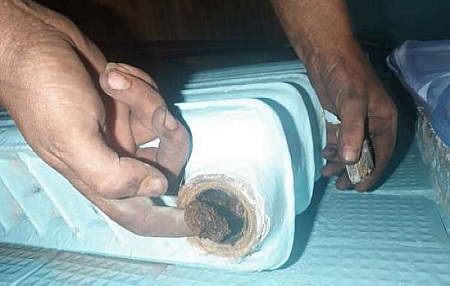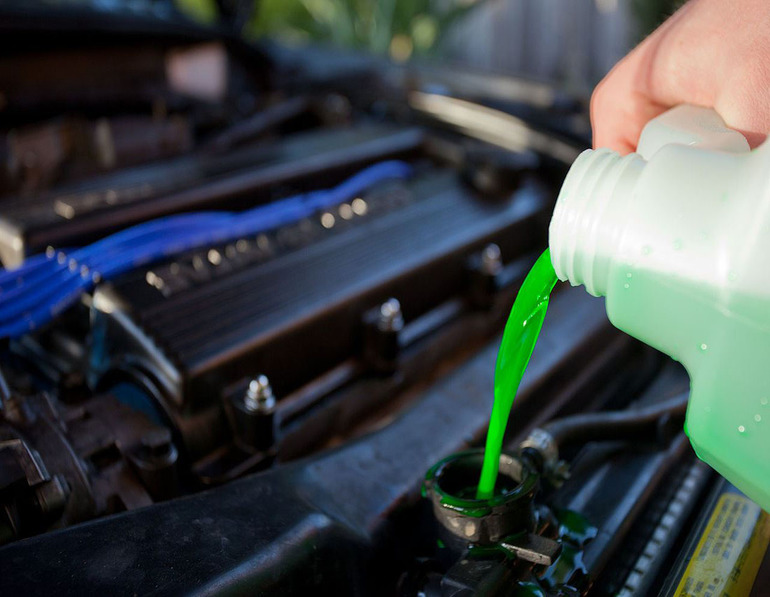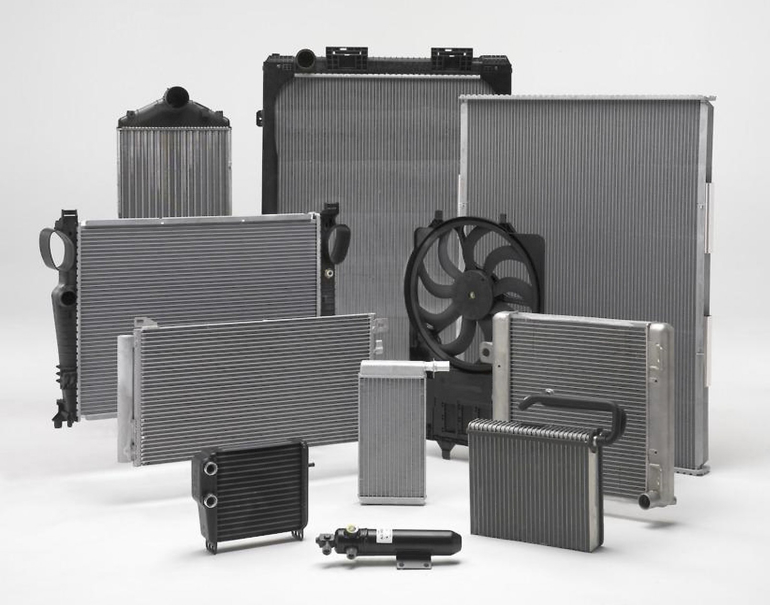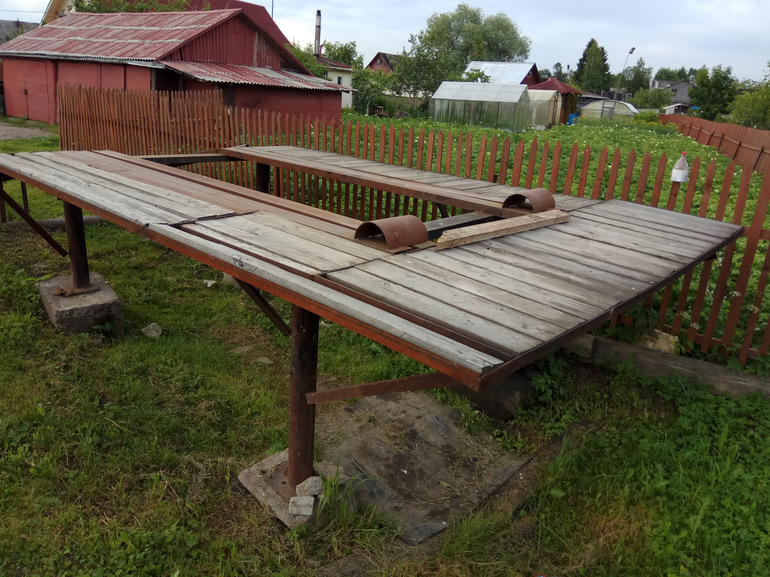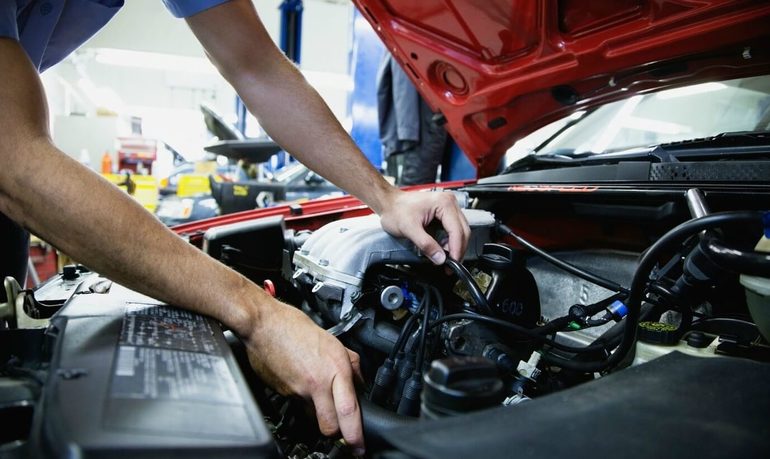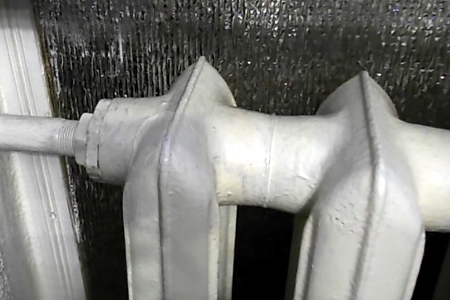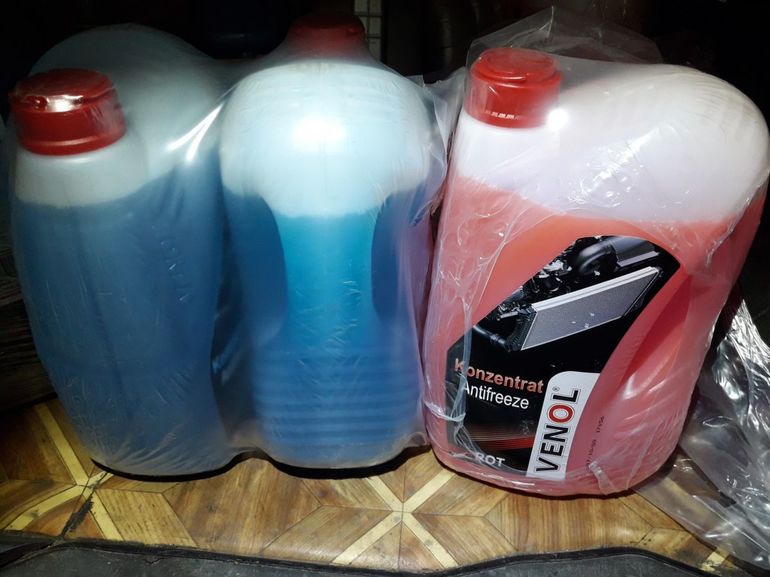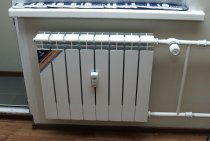Flushing heating systems in a private house
In private houses, especially those located outside the city, the problem of cleaning the heating system is more acute. This is due to the fact that the water circulating in the system is taken from wells and reservoirs where it is not purified. Thus, much more silt and other fine fractions that pollute the pipeline accumulate in heating radiators. In this case, it is much more expedient to clean the entire heating system, rather than individual radiators.
Flushing of cast-iron pipelines is carried out in the summer, but not in the heating season! Before starting cleaning, all valves must be opened to bleed the air from the batteries. This procedure is best done by a practicing master plumber. This work requires accuracy so that a flood does not occur and the equipment does not deteriorate.
It is not necessary to let water out of the boiler, the steam line is closed for the duration of cleaning. When the air is released and the corresponding valves are closed, then water is let through the entire heating system. Water must be supplied until clear water flows from the heating pipes.
For better cleaning, cleaning agents can be added to pipelines: soda ash, whey, vinegar. You can use chemical compounds: a means for washing car radiators or concentrated alkali "Mole".
After using chemical compounds, the pipelines must be thoroughly flushed. To do this, the boiler is heated and hot water is passed through the system, which will wash away rust residues, oil contamination and cleaning agent residues.
The procedure for flushing the system must be carried out 1-3 times a year. This will depend on the purity of the water supplied to the pipelines.
It is important to note that after the heating season it is not necessary to release water from the system. This is due to the fact that empty radiators are more susceptible to corrosion than those filled with water.
During the summer period, the water in the pipes also rusts, and therefore, before the next heating season, it is imperative to drain the rusty water and flush the system with the addition of bleach.
The main technology and sequence of flushing heating radiators
If you decide to flush the heating radiator yourself, then for this you will need a simple set of tools necessary for dismantling and installing the radiator, rags and a cast-iron bath. If you have an acrylic or cast iron bathtub installed, but you can do it outside, you are incredibly lucky. In the case of a cast-iron bath, everything is done in the following sequence:
- remove the heating radiator - unfortunately, this is a necessary measure;
- we line the bottom of the bathroom with unnecessary rags to protect the enamel from damage, also for safety, but already the sewage system, we install a mesh on the drain, which will protect the sewer from the ingress of washed solid particles into it;
- we disassemble the mixer by removing the watering can from it, because for this procedure we need a concentrated pressure of water;
- start flushing the radiator. To achieve the best effect, it must be rotated periodically.
During the flushing of the radiator, it may be necessary to additionally remove solid particles that must be pushed through with wire or other improvised means specially prepared for this purpose. Thus, it is necessary to flush the radiator until it is completely clean. This will be indicated by clean water that will flow from them. As for washing on the street, for this you need to stretch the hose with water and do everything in the same sequence. Naturally, after washing the inner surface, it is necessary to clean the radiator from the outside, giving it an aesthetic appearance.
Very good results can be achieved using special devices for flushing radiators. In this case, the dismantling of the radiators is not required. However, this method has a significant drawback - the high cost of equipment, which, given the infrequent work on flushing the radiator, is not advisable to buy. Such devices are often used by utilities or construction companies that have to deal with a similar problem quite often.
If it so happens that none of these methods suits you and rinsing with running water is not possible, you can do it differently. To do this, simply pour hot water into the radiator and add a cleaning agent, it is better to use soda ash for this. After about an hour, knock on the radiator with a wooden mallet, drain the water and do the same procedure several more times until it is completely clean. Also for this you can flush car radiators and whey, but such methods are used much less frequently.
How to flush a heating radiator at home
It should be noted that batteries should be cleaned at the end of the heating season.
Scheme of chemical flushing of the heating system.
To flush the heating battery yourself, it is necessary to drain the water from the heating system and dismantle the radiator. Washing is carried out with solutions of caustic soda, acetic acid, whey, as well as with the help of household chemicals.
Cleaning the radiator is done at home in the bathroom. In order not to damage the enamel of the bathtub, thick rags are lined on its bottom, and a mesh is placed in the drain hole so that large contaminants do not enter the sewer.
All plugs must be removed from the cast-iron batteries, and hot water should be poured into the open holes. After the first filling, the radiator must be shaken and drained of water with debris particles. Pour water a second time, but with the addition of a cleaning agent: soda ash or caustic soda, whey, vinegar. Acetic essence with a concentration of 70% use the entire bottle for one radiator.
After pouring this solution, the plugs should be closed and the device left for at least 1 hour. After the time has elapsed, the battery must be shaken well, tapped on it with a wooden hammer so that the remnants of rust and plaque are separated from its inner surface. The solution is drained and refilled with clean water. Flushing with water is carried out so many times until clean water flows out of the battery.
Thoroughly flushing the radiator cavity is also important because lactic or acetic acid residues can provoke rust formation.
Radiator cleaning scheme.
As a cleaning agent for a heater, you can use a car radiator cleaner. To do this, pour hot water into the cast-iron cavity with the addition of this liquid. Radiator cleaner should only be added a few grams, while strictly following the instructions on the package.
After closing the holes, the battery should be turned over and shaken every 10 minutes. After two or three hours, the water with the chemical composition is drained and the radiator is washed with plenty of water.
As a cleaning agent, you can use cleaning compounds for sewer pipes, for example, "Mole".
Cleaning batteries in the apartment
Often, consumers are wondering how to rinse an aluminum heating radiator in an apartment with their own hands. It is not difficult to do this, but only after the end of the heating season.
This is due to the stages of work:
- The entire carrier is drained from the heat main.
- Radiators are dismantled.
- If the batteries are very clogged, then you will have to disassemble them into separate sections, otherwise it is enough to rinse them with a chemical agent, filling the internal space with it and keeping it inside for an hour.
- Rinse the radiator with running water under pressure to remove scale and chemical residues, after which it can be returned to its place.
Such a procedure requires careful handling of an aluminum radiator so as not to cause mechanical damage to its outer walls, for which the bathroom is covered with thick rags. As a rule, aluminum reacts well to acids and negatively to alkalis, so when asked if it is possible to wash an aluminum radiator with citric acid, the answer will be yes.
The only thing to consider is the amount of substance for cleaning efficiency and the residence time of the solution in the system. As a rule, ready-made products are more effective, as they are already diluted to the desired consistency, indicating the duration of the process.
As a rule, aluminum reacts well to acids and negatively to alkalis, so if you ask if it is possible to wash an aluminum radiator with citric acid, the answer will be yes. The only thing to consider is the amount of substance for cleaning efficiency and the residence time of the solution in the system. As a rule, ready-made products are more effective, as they are already diluted to the desired consistency, indicating the duration of the process.
If you decide to install aluminum heating radiators, it is important to know the following:
Flushing aluminum radiators is a prerequisite for the efficiency and durability of their work. The choice of how to do this is up to the consumer, but in order not to harm the system, it is better to entrust such a delicate job to professionals.
How to flush radiators
In apartments and private houses, heating systems lose their efficiency over the years, which leads to a decrease in the quality of home heating. Among all the most common causes of this phenomenon, experts single out the problem of radiator pollution. There is a fairly simple explanation for this: the coolant during circulation through the heating circuit contributes to the destruction of the inner surface of the heating devices.
In addition, the water contains some impurities that can settle inside the heat exchangers. From here, pollution, blockage and, accordingly, a reduction in the useful volume of radiators appear, which leads to a decrease in the efficiency of their work. And the only correct solution (with the exception of replacing the heat exchangers with new ones) is flushing the radiators.
- Causes of pollution of heating devices
- Cleaning radiators in apartments
- Cleaning the heating system in a private house
- How to wash cast iron batteries during the heating season
How to clean an aluminum radiator
The use of chemicals
Aluminum is an extremely "capricious" metal. When choosing how and how to rinse aluminum radiators, you need to focus solely on the agent whose composition will affect the deposits without affecting the walls themselves.
Chemical flushing is good because it does not require dismantling the batteries and it can be carried out even at the height of the heating season.
It is based on 2 stages of work:
- Scale dissolution.
- Flushing and removing them from the system.
The disadvantages of this type of cleaning include increased toxicity of chemicals. When carrying out it, you need to use protective measures and be very careful.
Care is also required when diluting the chemical composition if it is sold as a concentrate. The wrong proportion can destroy aluminum along with scale
The most popular is the Master Boiler Power concentrate, which is suitable for all types of pipes and radiators. You can also use "folk" remedies, such as vinegar, whey or caustic soda.
Find out useful information about aluminum batteries on our website:
Hydrodynamic washing
This is one of the most time-consuming ways to clean the heating system.It is based on a shock jet of water, under the pressure of which scale exfoliates from the walls of the radiator.
Work sequence:
- The carrier is completely drained from the line.
- Areas to be washed are determined.
- Part of the pipe is removed, and in its place a hose with a special nozzle is connected, the end of which is inserted into the line.
- Water under the action of a pump under high pressure is supplied to the radiator, sweeping away scale and all debris in its path.
After the cleaning is completed, the system should be filled with water and run it several times to remove scale that has been beaten off the walls of the radiator.
hydraulic flushing
This work can be carried out during the heating season, since it only takes a run of water through the system:
- Before starting work, a hose is connected to the drain cock, the second end of which is led into the sewerage drain system.
- The valve on the feed side opens and the layer of dirt leaves under the flow of incoming water.
- Cleaning can be considered complete after clean water flows through the system.
This method is used when regularly flushing batteries. In the event that the system has not been cleaned for a long time and the pollution is strong enough, it will not help.
Pulse flush
If the question is posed, how to clean an aluminum heating radiator with minimal risk to it, then the answer is unequivocal - with the help of pulse flushing.
This is a fairly “young” and progressive method that guarantees safety to the aluminum walls of heaters, but it requires special devices, so you can’t do without calling specialists.
The method is based on a short-term impulse effect on water, during which a shock wave is formed, which moves through the system under a pressure of 12 atmospheres. This allows you to remove scale of any thickness without damaging the walls of the radiator, provided that it can withstand such water hammer.
This method is effective if:
- The pipe diameter does not exceed 4 inches.
- Even at a distance of 60 m from the device that creates an impulse effect, the radiators are effectively descaled.
- Pulses do not affect the integrity of fittings and line assemblies.
This flushing method increases the efficiency of the radiator up to 25%, which, in practice, returns the parameters to the design, corresponding to the product that has just left the assembly line of the factory.
Car service frequency
It is recommended to flush the cooling system at least once every two years. Also, the car owner should be aware of the mandatory replacement of antifreeze, which can maintain its performance for 2 years or with a run of 50,000 kilometers.
Flushing the radiator and the entire cooling system must be performed in the following cases:
- There were lumps of dirt and scale flakes in the antifreeze.
- The antifreeze in the expansion tank became cloudy and darkened.
- There is frequent overheating of the engine.
- There are problems with the thermostat.
- The fan on the radiator began to work noticeably more often.
- There were problems in the operation of the interior heater.
If the car owner ignores the need to flush the cooling, this leads to a serious overheating of the engine, in which the cylinder head cracks, and subsequent repairs can be expensive. Therefore, it is necessary to check the condition of the antifreeze and the expansion tank on a regular basis, which will allow for the simplest service to be carried out in a timely manner and to exclude serious damage to the power unit.
When should batteries be flushed?
The following signs indicate the need to flush heating radiators:
- Uneven heating, for example, the heating device can be hot from below, and cold from above, or vice versa.
- The radiator began to heat up more slowly than before.
- Energy consumption has increased significantly.
Most often, the need for cleaning occurs in batteries that are connected to centralized heating systems. This is due to their length, a large number of connected equipment.
As a result, radiators accumulate:
Moreover, cast-iron radiators are most often clogged, since, unlike aluminum bimetallic ones, they have much more irregularities inside. True, the cleaning process of both is performed in the same way. However, looking ahead, he will note that bimetallic heating devices are best washed by the chemical method.
Advice! To avoid frequent clogging of the autonomous heating system, softened filtered water should be used as a heat carrier. In this case, even after several years of operation, the batteries will remain clean.
Scheme of accumulation of pollution in radiators
Gentle cleaning of the radiator
Cooling maintenance (including flushing and replacing antifreeze) is not particularly difficult, so this work is quite possible to do without contacting specialized workshops. You don’t even need to purchase special auto chemicals if you use citric acid or ordinary distilled water to eliminate existing internal deposits.
A mild system flush is recommended annually with distilled water. To do this, it is necessary to drain the antifreeze from the radiator and engine crankcase and pour it into the expansion tank, which will reduce the cost of operating the equipment. Using distilled water, you can remove existing contaminants that accumulate in the lower part of the radiator and impair the cooling efficiency of the power unit.
The car owner will need to drive the car onto a flat area. It is best to flush the VAZ cooling system with citric acid on a flyover or in a garage pit. The old coolant is drained from the engine, for which drain plugs are unscrewed on the crankcase of the cylinder block. After that, the lower radiator pipes are removed and wait until all the antifreeze has drained into a specially prepared container.
Then the drain plugs are tightened and the radiator pipes are installed in place. Distilled water or a prepared special solution based on soda, citric or lactic acid is poured into the tank. The system is bled to remove air pockets and allow fluid to circulate through the large and small cooling circuits.
The engine is started, the engine is allowed to run for about 5 minutes. After that, the unit is turned off, cooled, and distilled water with various small contaminants suspended in it is drained from the crankcase and radiator.
All that remains to be done is to fill the system with antifreeze, bleed the pipes, removing all air and air pockets, after which you can easily operate the engine for one to two years until the coolant is replaced and the radiator is completely cleaned from dense dirt and calcium deposits. The latter can be eliminated only with the use of citric acid and other similar means.
How to rinse cast iron radiators
The efficiency of cast-iron radiators, the decrease in their heat transfer depends on many factors, including the cleanliness of the internal cavities. The high temperature of the coolant contributes to the accumulation of scale on the walls of the sections. From periodic draining and filling, radiators can dry out, which leads to corrosion. Particles of scale, rust, and other mechanical impurities that get inside due to poor water filtration mix with the coolant and clog batteries and pipes. As a result, the quality of heating decreases, fuel consumption increases.
It helps to cope with such a problem by periodically washing cast-iron batteries with your own hands. This work can really be done independently, without resorting to the help of any firms.To perform cleaning, you should prepare and follow the sequence.
Signs by which you can understand that it is necessary to clean the heating devices:
- Uneven heating of the radiator. At normal pressure and temperature in the network, without airing, the top of the battery is hot and the bottom is cold. Or vice versa. And also with hot supply pipes - the radiators are barely warm.
- The heating system takes longer to warm up than usual.
- A clear symptom of the presence of large contaminants in the battery is an increase in energy consumption.
Tips & Tricks
As you can see, the amount of citric acid in the solution can be considered conditional. At the same time, one should not strive to significantly exceed the concentration, since citric acid in large quantities can also be aggressive towards individual parts of the cooling system.
To obtain the result, it is optimal not to increase the amount of acid, but to repeat the washing procedure several times. Some owners even practice a more radical way, when they drive a car for a short time with a cleaner filled in instead of antifreeze, then the system is flushed, then distilled water is poured in and the car is operated in the usual mode.
The next day, the cleaner is poured again, and the washing under load is repeated. Only after the drained flush and distilled water are clean, fresh antifreeze is poured into the system.
Finally, we note that preventive flushing of the engine cooling system with citric acid or other means allows you to extend the life of individual parts of this system and reduce the load. It is also possible to increase the resource of antifreeze or antifreeze.
Remember, the proper operation of the engine cooling system allows you to maintain an optimal temperature balance in any conditions, which has a positive effect on the overall life of the internal combustion engine.
The principle of operation of the cooling system
The principle of operation of cooling an internal combustion engine is extremely simple. Antifreeze or antifreeze circulates through the radiator and pipeline, which reduces the temperature of a running engine, preventing thermal deformation and overheating of the power unit. The main elements of cooling are the following nodes:
- Radiator and fan.
- pump and thermostat.
- Numerous pipes and cooling channels inside the engine.
When the car is running, antifreeze constantly circulates in the system, which is cooled in the radiator, and then fed into the engine to reduce the temperature of the power unit. Thanks to the thermostat, it is possible to direct the liquid along a large and small circuit, maintaining the optimal parameters of the motor.
During long-term operation, various salt deposits and oxidative deposits appear on the inner walls of the elements of the cooling system, which leads to a constant increase in the operating temperature of the engine and premature wear of the crankshaft with the piston group. This can be prevented by regular maintenance, including cleaning the radiator and pipes from internal contaminants.
